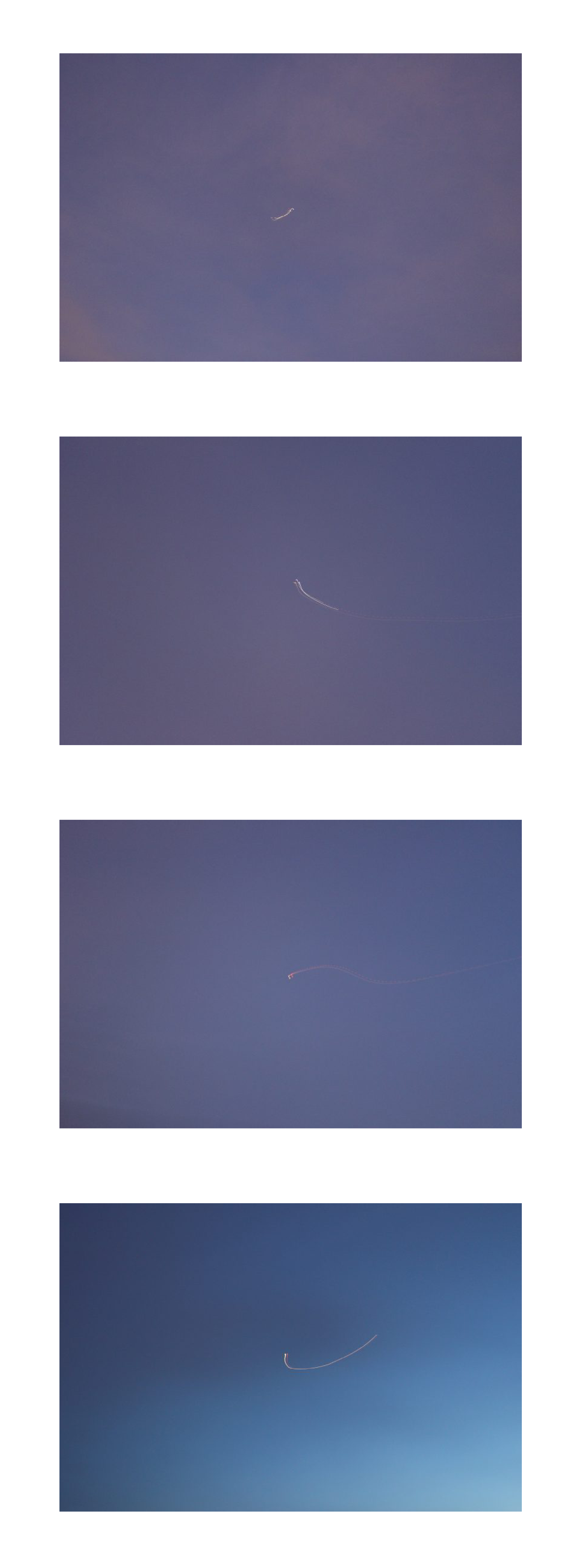Elongating time
Time accumulates and manifests itself to provide a virtual depth of immaterial time. My photographs deal with the perception, the reality, and they go beyond the traditional ideas of time, to reveal an intangible and transgressive character. I tried to blur the lines between the mobile and the inert, concentrating on the visual perception. This fluid and evanescent nature of time in this photographic serie breaks with the current ideas on the relationship between the photography and instantaneous, and on the photographic image as a representation of a temporal fragment.
The movement in photography and how it can express spatio-temporality
This series of photos transforms a concrete environment into an abstract landscape. Time, colors, blurred or sharper shapes transcribe the atmosphere of this place. The sunset is the perfect time to obtain a contrast, this quiet evening then becomes dynamic by the luminous movements of lamp posts and houses. The long opening time of the lens generates randomness and uncontrolled results. From one end to the other, the line represents the distance that light has traveled in a space during the opening time of the lens. The essence of work is to try to master this chance, a coincidence where the relationship between the tool and the person is caused by the uncontrolled movements of the hand holding the camera. Without the knowledge of the spatio-temporal context, the sensitive lines and the patterns that the light draws are abstract. The graphic style gives the impression of a floating and dynamic space, where the created light overlays on several planes.





Hiroshi Sugimoto
In his black and white photographs, Sugimoto uses natural light, the shadows and the purity of forms. In his marine landscapes, the immutability causes the loose of the notion of time. They invite to a constant reflection about the origin and history of the world and of our culture, where concepts like space and time are explored expanding our ways of perception.
« This is more like a land art kind of concept for me, how people understood the environment, the relation between human and nature. The sens of time is a very important factor of early human consciousness. » Hiroshi Sugimoto.
The photographer Hiroshi Sugimoto began his series Theaters in 1978. Since that year he has been photographing the dark rooms and their screens. To achieve this result, he positions his camera and captures a long pause photograph during the entire film. It allows to capture all the details of the rooms and the screen was transformed into a large light source of rectangular shape. The photographs capture the passage of time, and raise questions about what is real and what is fiction.
Roman Signer
The explosions does not cause chaos, but movement, and forms. Explosives can form an ephemeral sculpture, as well as light can form an ephemeral sculpture. For Roman Signer, the most important is the art of experiences.
Time, extended : Hiroshi Sugimoto with Gilles Deleuze
«The question here is more of time-images as Gilles Deleuze calls them, or accidents of time, which harness the event not as form, that is, movement or temporal passage, but as a nonmaterial, nonchronological intensity, an ‘explosantefixe’ (fixed-explosive), in the words of Andre Breton. The accident as contemporary temporality is presented as time that endures, an instant that persists (outside of its representation), a temporal shock wave that branches, spreads, propagates itself.» Olivier Zahm, ArtForum, 1993.
Hiroshi Sugimoto evokes a sense of time that is floating constantly between reception and production and provokes an understanding of time as event, thereby undermining the notion of the photograph as a frozen moment of time. Although a photograph captures a single moment of time and fixes it on paper, Sugimoto reinforces time as duration and and makes you feel as if time stands still and moves on at the same time.






